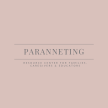
Hi everyone! I’m Anne, a Master of Social Work, early childhood educator and mom. I’ve worked with children since I’m 11 years old- yes, that young! I started as a camp counselor and worked my way through various roles- caretaker of numerous younger family members, career nanny, school social worker intern, early childhood educator and most recently, as a mom. What makes me qualified to speak on child development and parenting? Aside from over 16 years of hands-on experience, I have extensively studied childhood development, family psychology, completed countless hours of professional development and continue to educate myself on best practices in regards to raising our little ones. At this point in my career, I feel the need to step up and create a voice for myself in a space I am confident I can assist others in. I hope this is the start of a new chapter where I can work with parents and families to tackle the struggles of parenthood, provide a space for caregivers to connect and ask questions, and navigate the intricacies of balancing alllll the responsibilities. Cheers to new beginnings and bringing a passion project from dream to reality!
As a long time caregiver and educator, the following subjects related to child development and parenting are ones I feel most passionate about. These topics are deeply rooted into how I teach my students, interact with clients, advise my families, and are the foundational base for how I am raising my son.
Positive Guidance: Positive guidance is a foundational approach to parenting which seeks to foster a child's emotional, social and cognitive development through positive reinforcement, effective communication and respectful interactions. I firmly believe that positive guidance is an invaluable tool in nurturing a child's growth and well-being.
Positive guidance focuses on establishing a nurturing and supportive environment that empowers children to explore, learn and make choices on their own within appropriate boundaries. It recognizes that children are active participants in their development and their voices and feelings deserve to be acknowledged and respected. This approach is rooted in the belief that children thrive when they feel valued, understood and secure in their relationships with their caregivers.
Diversion, not Discipline: Diversion, as opposed to traditional discipline, is a powerful parenting technique focusing on redirecting a child's attention and behavior rather than using punitive measures. It recognizes that children are naturally curious and eager to explore their surroundings and harnesses this innate curiosity to guide their behavior in a positive direction.Diversion helps limit the amount of “no’s” your child will hear in a day and give them a sense of control over their decisions, likely limiting the likelihood of challenging behaviors.
One of the key aspects of diversion is the art of offering choices within appropriate boundaries. This empowers children by giving them a sense of autonomy and control, while still ensuring that those actions fall within acceptable limits. For example, instead of simply telling a child not to touch a fragile object, you can offer them a choice between two safe and engaging activities, both of which divert their attention away from the object. Another example would be giving two clear choices in which you would be satisfied with their choice either way. Think of mealtimes: “would you like broccoli with your chicken for dinner, or spinach?” This approach allows children to feel a sense of agency and independence while also respecting their need for exploration. The bonus is that by giving options you are content with, no one gets upset with the decision made!
Narrating + Modeling: Narrating and modeling are invaluable tools in teaching young children. Narrating involves verbally describing actions, emotions and situations as they occur, providing children with a clear understanding of what is happening around them. This helps build their vocabulary and comprehension skills, enabling them to communicate their own feelings and needs more effectively.
Modeling, on the other hand, entails demonstrating desired behaviors and responses for children to observe and emulate. When parents or caregivers exemplify positive actions and coping strategies, children are more likely to adopt and internalize these practices. This process of observational learning fosters a strong foundation for healthy emotional and behavioral development. Both narrating and modeling display context in decision making, predictability in routine, socially acceptable behaviors inside and outside the home and sets expectations in communication and behavior.
So, how can I help YOU?
With thorough experience and ample knowledge in early education, child development, psychology and social work, I am well equipped as a resource and guide to you as a caregiver, family member and/or educator. As I establish myself as a trusted resource, I hope to add a slew of services to help guide families and caregivers on an individual basis. Follow me on Instagram for insightful, relatable and useful content: @paranneting and keep your eyes on my personal website, linked below, for parenting and educational resources, along with services to be offered!
About the Creator
Anne
blogger, content creator and mama
find me on socials: @paranneting @anamesa_anne
zillenial






Comments
There are no comments for this story
Be the first to respond and start the conversation.